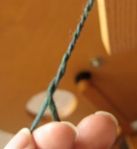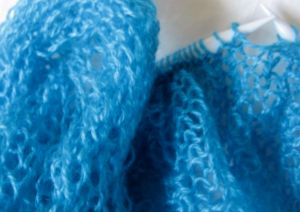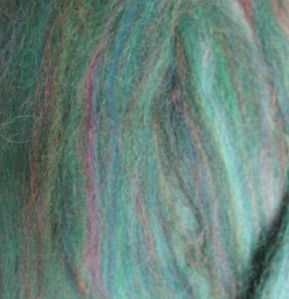
When I had finally spun some yarn I was proud of and discovered I was only halfway through the process, I was a bit alarmed. Darn it! Watching the spinners in my Wednesday class left me feeling that plying might be harder than spinning. More twist to control, more yarn to feed, and all while treadling in the opposite direction (that is, if I could remember to!) But, like spinning itself, we seem to know what to do with this action called plying. In time, the brain and hands coordinate, and we are plying away.
A single is just what the name implies–a single strand of spun yarn. Yarn is spun either with a Z-twist (your wheel spins clockwise) or an S-twist (your wheel spins counterclockwise). Both “twists” perform the action of locking

the wool fibers together into a stronger, now usable, strand. Singles are most often used in weaving, but rarely in knitting. Once you’ve spun two bobbins of singles, you can ply them from a lazy kate onto a third bobbin.
The important thing about all this is that you must ply in the opposite direction from which you have spun the singles. This is because the act of plying the singles in the opposite direction from which they’ve been spun “balances” the twist between the two singles. Plying in the same direction will just “undo” the twist and give you less stable yarn.

Lastly, you must ply singles that have been spun in the same twist direction! Plying a Z-twist strand with an S-twist strand will just give you a big mess!
Arabella advised me to spin all my singles with my wheel spinning clockwise (Z-twist). With this as the only standard for my singles, I can ply away without undoing the twist, or creating a mess!
























